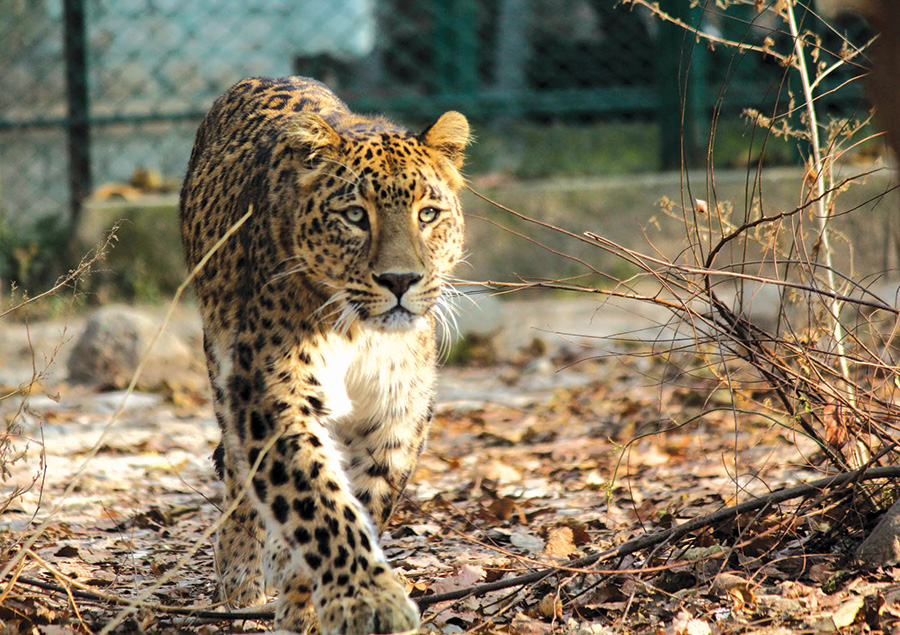Concretization of the Valley’s plains does not prevent the wild from descending down the peaks. Umar Mukhtar reports a literal butchery by a possible leopard in a village far away from the forest

Eight-year-old Mohammad Aazim Padroo, a resident of Banderpora Pulwama, and his cousin, almost of his age were giggling, running after each other and playing hide and seek in the yard of their house. A portion of the yard grows maize. They were hiding from each other in the dense maize alcove.
Engaged in literal hide and seek, they once, came out of the alcove, hand in hand. Huffing and puffing, they ran towards the gate of the yard where Gulzar Ahmed, their uncle, was standing. “There is a big cat inside the plantation,” Gulzar recalled, a frightened Azim telling him.
Gulzar did not take it as seriously as it was. Rather, Gulzar asked the kids to get inside the home as it was evening time. He went inside and the children followed. Once Gulzar entered the main door of his home, he heard women crying. They were Aazim’s two aunts, who were also in the same garden, at a distance.
They saw a wild animal catching hold of Aazim by his neck and dragging him towards the gorge, not far away from their home. They were seeking help. Eventually sensing what it could be, Gulzar ran barefoot towards the gorge. He started calling Aazim but there was no response. There was nothing near the gorge.
With a heavy heart, Gulzar rushed back, almost ran towards the mosque, put on the loudspeakers and broke the news. He sought help from the villagers in tracing his nephew. Within seconds, the village was out with flash, sticks, axes, rods to search the child. They started searching the little kid, everywhere, in all directions.
At 12, around midnight, they saw some blood traces near some bushes, but Aazim was not around. Someone among them knelt and searched in another bush. Aazim was lying there almost without the neck portion. He was dead. His throat had been mauled. There was only a bone that was holding Aazim’s head with rest of his body.
The recovery of the badly damaged body of Aazim shocked the village. Chilled to the core, the people were so scared that they avoided venturing out of their homes.
Khudai-sund kehar, was the quick response from the village octogenarian. “Till date, I have never seen any such case where a wild animal is living among us and is eating humans,” he said. A day after, a similar case was reported from Kulgam, where a lady was mauled by a bear. But the fundamental difference remains. Unlike Kulgam, the Banderpora is far away from woods, almost insulated by a lot of plains and population.
The vanishing of Gaas-i-Charai, buffer zones, is the culprit, people manning the wildlife department said. “These zones were a natural check for the wild animals intruding into the residential areas,” DFO wildlife Shopian Ifshana says. These zones were normally used to graze the animals were converted either into habitations or orchards. She does not rule out the rampant deforestation as another reason, insisting it disturbs the whole food web in a forest. “Ongoing conflict in the valley, where much of conflict-related activities are done in the woods, probably breaks the routine cycle there,” she asserts.
Since 2006, Kashmir has reported 194 deaths and 2480 injuries. Usually, bears and leopards play the villains in this game.
The wildlife department says it is organising awareness camps and issues media advisories for educating the people to protect themselves from such attacks. “Every year we plant many fruit-bearing trees in the forests. Easy availability of food may contain such man-animal confrontations,” said Chief Conservator Wildlife, Kashmir, Rashid Yahiya Naqash. “If the wild animals find their habitat encroached, they move out from there and search any such place where they can find shelter and soft preys.”
Naqash says the wildlife has coexisted in the fringes of human settlements throughout. “If a wild animal becomes a man, we hire hunters to eliminate him,” Rashid said.
The wildlife department has established 25 control rooms across the valley which can be contacted in case if any wild animal is spotted in the residential areas.















